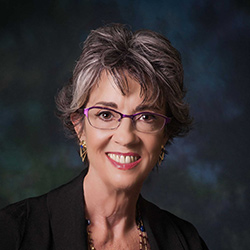A draft plan calls for developing 25 “robust” college-based programs, and 1,000 paid internships, to train executives and managers in our field—all by 2025.
Put 130 university educators and aging services providers in a conference room—a very large conference room.
Ask them to come up with ways to strengthen the education and training of executives and managers in the field of long-term services and supports (LTSS).
And then stand back. You may be surprised at what happens.
I certainly was surprised—pleasantly so—in mid-June when an eclectic group of sponsors, including LeadingAge, brought an equally eclectic group of stakeholders to Chicago for the invitation-only Vision 2025 symposium.
During 2 days of deliberations, LTSS providers, university educators and deans enjoyed some great, and much-needed, networking time. We had some great discussions about the future of aging services. And we came up with a draft plan for developing 25 “robust” college-based programs, and 1,000 paid internships, to train executives and managers in our field.
We pledged to meet these goals by 2025. That’s just 6 years from now.
It is a bold plan, especially considering that only a handful of college programs currently are dedicated to management education for the LTSS field. And there are nowhere near the 1,000 paid internships that we’re looking to establish.
Does that mean we shouldn’t try? I don’t think we have a choice. We have to try.
SETTING PRIORITIES
Our meeting agenda mirrored the first steps I think providers and academics across the country should take as they begin developing partnerships.
We started by getting to know one another and the challenges and opportunities facing our respective sectors. Only then did we begin setting priorities and identifying next steps for our bold journey.
By the end of our second day together, symposium participants had agreed on a set of priorities that included:
- Launching a campaign to rebrand and create positive language about our field.
- Designing career paths for LTSS managers.
- Investing in educational programs that will help managers follow those career paths.
- Exposing younger and second-career students to career opportunities in the LTSS field.
- Developing paid internships and fellowships that will support students as they learn “on the job.”
I’m looking forward to spending the next 6 years working with new and long-time colleagues to advance these and other priorities. In my view, we need to meet 2 overarching goals:
Get colleges and universities to invest in robust training programs. These programs should feature a relevant curriculum, a knowledgeable faculty, and an effective infrastructure for recruiting and retaining students who feel called to serve our field. This investment is not likely to happen without the strong support of academic leaders, including presidents, provosts, deans, and department chairs. We need to get them on our team.
Engage providers in this effort. Providers of aging services stand to reap many benefits from robust educational programs for their managers. In return, they must be willing to contribute funds to support program development. Providers must take an active role in helping university partners to identify the competencies managers need and to build the expertise of faculty. They also must be willing to sponsor fellowships and paid internships for management trainees.
REACHING FOR THE STARS
LeadingAge members are seeking well-trained, licensed administrators who can lead their organizations into the future. As current administrators retire after many years of service, there’s a critical need for equally skilled replacements. I’m hopeful that the Vision 2025 initiative will give us those leaders.
But let’s not stop there.
Let’s also work together to ensure that, eventually, leaders across the continuum—whether they be administrators, nurses, social workers, other clinicians, or frontline managers—have the skills to design and implement services, supports, and settings that align with growing consumer need and changing preferences.
I’d like to see us equip those leaders with the business skills they need to ensure that their organizations remain innovative and competitive. Let’s encourage these leaders to become social entrepreneurs who know how to plan strategically for an uncertain future.
Granted, all this won’t happen within the 6-year timeframe set by Vision 2025. And that’s fine.
I’m willing to take it one step at a time as we work hand-in-hand with our academic partners to reach for the stars.

Robyn I. Stone, DrPH, is senior vice president of research at LeadingAge, and co-director of the LeadingAge LTSS Center @UMass Boston. Her widely published work addresses long-term care policy and quality, chronic care for people with disabilities, the aging services workforce, affordable senior housing, and family caregiving.
